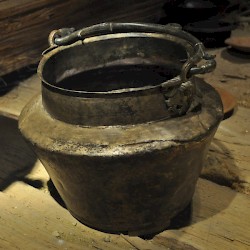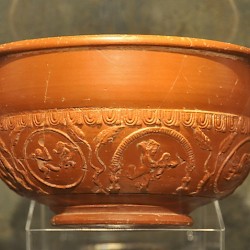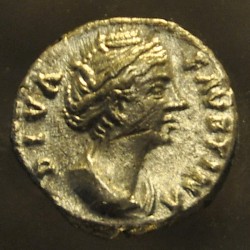Mikulov, Regional Museum
Q68045199Mikulov is just north of the Austrian-Czech border. It is dominated by a beautiful castle on a mountain, in which you will find several museums, one of them dedicated to the archaeological evidence for the presence of Romans and Germans in southern Moravia. It is not a very large exhibition – in fact, it consists of only three rooms.
Still, it is worth a brief detour. Situated some seventy kilometer north of the Danube, this region never belonged to the Roman Empire, but it is undeniable that the people living here were dominated by their powerful southern neighbor. So, the numismatic display contains coins of almost every emperor, proving that trade between the Marcomanni and the Romans was very important.
Occasionally, the Germanic tribes living in Bohemia, the Marcomanni and the Quadi, attacked the Roman Empire. The emperor Marcus Aurelius was even forced to retaliate, and fought a long war in this area. The base of the Tenth Legion Gemina has been found near Mušov. There has been some debate about the question whether the Romans intended to create provinces north of the Danube, but the fact that locally made roof tiles have been found is, in my view, conclusive evidence that the Romans were not just having their winter quarters north of the river, but were building permanent barracks.
Mušov is also the place where a local Germanic chieftain was buried. In his tomb, a large treasure was found, which is now shown in the last room of the Mikulov museum. The objects themselves are not extremely special, but there are very many of them, proving that this man was really important.
I was glad to have visited the museum. Next to the castle is Mikulov’s central square, where we had lunch. After that, we went to the Oberleiserberg, a Celtic hillfort (oppidum) in northern Austria that was later reused by the Bavarians, and returned to Vienna. It had been a nice day.
This museum was visited in 2012.
5 pictures related to this museum
 Mušov, Bronze bucket |
 Mušov, Treasure |
 Mušov, Terra Sigilata |
 Faustina I |
 Mušov, Tile of X Gemina |